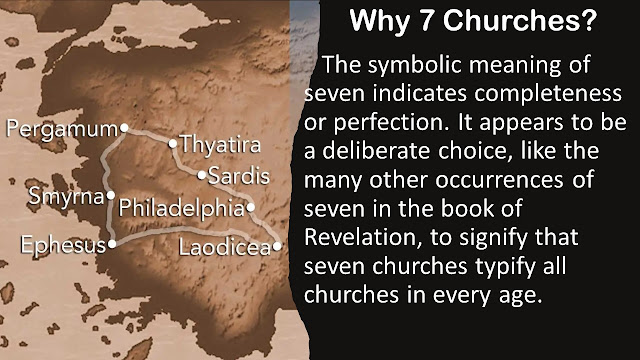Onto the verses in chapter 1, where Jesus reveals Himself to John. There are different opinions on what the symbolism means. We can be certain that the meaning of each symbol will come to light at just the right time in history as the events recorded begin to unfold. We’re going to highlight the key points in each verse.
V.1 sets the stage for understanding Revelation. We are told it came to John as a revelation from Jesus Christ. So, we can have confidence in it as such, even when we don’t understand it. John is the writer, but Jesus is the author. We are also told that God used an angel to enlighten John with the visions John experienced. The third thing is that it was a direct testimony of Jesus Christ. Something we can put our complete trust and confidence in, yes, even the difficult parts.
V.3 tells us that we are blessed both reading and hearing it. But we are also, to take to heart what it states. What better reason could there be for both reading and also pondering it? We are also told that the “time is near”. What time is that? Certainly, it was near for those 1st century Christians facing persecution, but is the stage being set for each following generation, including ours? How near is it? We don’t know, but certainly closer than it has ever been for every other generation.
In v.4 John addresses 7 particular churches in Roman Asia (modern Turkey). V.5 tells them and us, that out of love, Jesus freed us from our sins by the shedding of His blood, and crucifixion; certainly not because we deserved it.
Slide explains significance of seven churches.
Most, in almost every age group, have a smartphone today and access to the internet, which explains how every eye not only can, but will see Him, something that earlier generations didn't have. As technology advances, answers will become increasingly clear as we get closer to the events unfolding.
The Alpha and Omega are the first and last letters of the Greek alphabet. Jesus oversees every event from the beginning of time, to the His final coming and defeat of Satan. Nothing escapes his knowledge or view.
In v.9 John tells the early Christians that he too has suffered for his faith, being exiled to the Roman penal colony on the Isle of Patmos.
When he wrote Revelation, John’s age is believed to have been in his late 80s or early 90s.
John tells us he was in the Spirit, when instructed to write a letter to those specific churches. There were more than seven churches throughout the region and across the Roman Empire, as such, we can see it as a message intended for all churches, both then and now.
Each golden lampstands represents one of the seven churches. The number seven represents completeness, which again, is believed to represent all churches throughout the region and down through history, each of which, must discern what portion applies to them, even the criticisms.
Chart shows the 7 churches in the order listed. The seven churches are the primary focus of the first three chapters of Revelation. This posting is extracted from our Sunday morning study of Revelation and revised to fit this format by excluding portions of that study.
V.13-18 are very telling regarding Jesus, as we'll see.
In v.13 describes John's vision "like a son of man", who we learn is Jesus Christ in His risen glorified body.
In v.16 the stars are interpreted as representing the seven angels, messengers, or bishops of the seven churches. The brilliance of Christ is noted. Holding the seven stars in His right hand shows that they are under his special care and protection.
Being overwhelmed with the slender of what he witnessed; John fell down almost in a deep faint. Jesus tells us that He is the First and the Last, from the beginning of creation to the very end of time. He tells of His death and resurrection. Holding the keys of death and Hades reflects Him as the final judge in which everyone will stand before Him at the final judgment and be held accountable.
V.19-20 bring us to the close of chap. 1. John was told to write what he saw, regarding the seven stars & seven golden lampstands. Some believe the seven stars are pastors or elders who lead each church—angels not known to lead a church. Or they are angels assigned to protect each church by Jesus. Just as Archangel Michael is professed to be the guardian of Israel.
One interpretation of the Book of Revelation is that it is composed of 6 specific visions, as shown on the chart, including chapters for each vision. The chart is a quick overview of those key events. It shows why many Bible scholars proclaim that we are already in the End of the Age. There is not on specific interpretation of Revelation, since it's generally believed that most is yet to come.
To access earlier postings, go to the bottom of the page and click on older posts.





































































